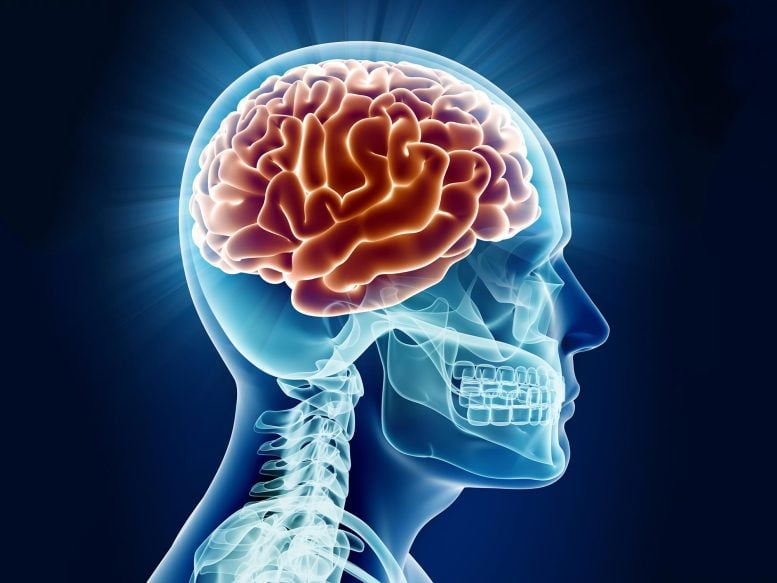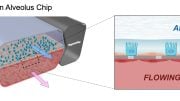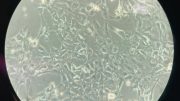
A recent study in mice indicates that significant molecular changes in aging brains occur in the white matter, which is vital for transmitting brain signals. The research also showed that plasma from young mice could potentially slow age-related cognitive decline, offering insights into normal aging and neurodegenerative diseases.
Recent research on mice reveals that as the animals age, the most significant changes occur in white matter, the tissue responsible for conveying messages throughout the brain.
Many of us, upon reaching middle age, observe a decline in memory and cognitive abilities. However, the exact molecular changes in the brain responsible for this are not fully understood by scientists.
However, a recent study conducted in mice has revealed that the most significant changes tend to occur in the white matter of the brain, a type of nervous system tissue that’s integral to transmitting signals across the brain. The study also examined two treatments — caloric restriction and infusions of plasma from young mice — that affect certain regions of the brain, with the plasma appearing to slow the age-related decline.
The results offer insight into the cognitive decline of normal aging, as well as the way aging contributes to neurodegenerative conditions such as Alzheimer’s and Parkinson’s diseases and multiple sclerosis.
In many neurodegenerative diseases, certain areas of the brain are more vulnerable to damage, but scientists don’t know exactly why.
“I saw this study as a way to explain that somewhat mysterious regional vulnerability,” said Tony Wyss-Coray, Ph.D., a professor of neurology and neurological sciences who led the study that examined gene expression in different regions of the mouse brain as it matures.
Wyss-Coray, the D.H. Chen Professor II at Stanford Medicine and the director of the Phil and Penny Knight Initiative for Brain Resilience at Stanford’s Wu Tsai Neurosciences Institute, is the senior author of a paper describing the research. Oliver Hahn, formerly a postdoctoral fellow in the Wyss-Coray lab and now a principal investigator at Calico Life Sciences, is the lead author on the paper. The paper was recently published in the journal Cell.
Different genes found in different regions
The research team sampled 15 regions in both hemispheres of the brains of 59 female and male mice aged 3 to 27 months. They identified and ranked the top genes expressed by cells found in each region of the brain. They identified 82 genes that are frequently found and vary in concentration in 10 or more regions.
The team used these genes to develop a common aging score, assessing how gene activity in different regions of the brain change with age.
The researchers found that the white matter, which is found deep in the brain and contains nerve fibers protected by white-colored myelin, showed the earliest and most pronounced changes in gene expression for mice 12 and 18 months old. According to Wyss-Coray, these mice are about as old, in mouse years, as a person in their 50s.
“We cannot definitively say how gene expression changes in white matter affect memory and cognition. That would require more genetic manipulation and neurobiology work,” Wyss-Coray said. “But we know white matter is the wiring that connects the different brain regions together.”
Past work has shown that aging disrupts an otherwise stable gene expression pattern in the brain, turning on genes that regulate inflammation and the immune response, and turning off genes responsible for protein and collagen synthesis. The inflammation and immune response affect the integrity of the myelin sheath, the insulation layer around nerves responsible for transmitting signals across the brain.
“White matter has been a rather neglected area in aging research, which usually focuses on the neuron-dense regions like the cortex or hippocampus,” Hahn said. “The fact that white matter is emerging in our data as an area of particular vulnerability to aging opens up new and intriguing hypotheses.”
Testing interventions
Interventions to slow the genetic shift that leads to the decline in specific regions of the brain could be beneficial in addressing neurodegenerative disease as well as the general decline associated with aging.
During the study, the team explored two interventions — caloric restriction and injections of plasma from young mice — to evaluate whether they protected against the region-specific shifts in gene expression. Each intervention began when the mice were 19 months old and lasted four weeks.
The researchers found that the dietary intervention caused genes associated with circadian rhythms to turn on, while the plasma intervention turned on genes involved in stem cell differentiation and neuronal maturation that led to selective reversal of age-related gene expression.
“The interventions appeared to act on very different regions in the brain and [induce] strikingly different effects,” Hahn said. “This suggests that there are multiple regions and pathways in the brain that have the potential to improve cognitive performance at old age.”
The team also examined age-related changes in genes associated with three neurodegenerative diseases — Alzheimer’s disease, Parkinson’s disease, and multiple sclerosis — that typically affect specific regions of the brain. The expression distribution for each gene had changed in older animals and occurred in regions of the brain that are not typically associated with a particular neurodegenerative condition. This finding could offer insight into the vast number of patients who have neurodegenerative diseases without a firm genetic link.
The study could also offer new opportunities to explore treatments and interventions by using the gene expression data to zero in on the cell populations vulnerable to aging. Future studies could explore how gene expression leads to functional changes in neuronal activity and structure. Wyss-Coray and colleagues at the Knight Initiative for Brain Resilience aim to expand on this work by building similar genetic atlases of aging in the human brain.
“The individual gene changes observed in the mouse may not directly translate to humans,” Wyss-Coray said. “But we believe the vulnerability of white matter to aging probably does.”
Reference: “Atlas of the aging mouse brain reveals white matter as vulnerable foci” by Oliver Hahn, Aulden G. Foltz, Micaiah Atkins, Blen Kedir, Patricia Moran-Losada, Ian H. Guldner, Christy Munson, Fabian Kern, Róbert Pálovics, Nannan Lu, Hui Zhang, Achint Kaur, Jacob Hull, John R. Huguenard, Sebastian Grönke, Benoit Lehallier, Linda Partridge, Andreas Keller and Tony Wyss-Coray, 16 August 2023, Cell.
DOI: 10.1016/j.cell.2023.07.027
Researchers at New York University Langone Health, Saarland University, the Helmholtz-Centre for Infection Research, the Max Planck Institute for Biology of Ageing, Alkahest Inc. and University College London contributed to the study.
This study received funding from the Phil and Penny Knight Initiative for Brain Resilience, the European Research Council, the Max Planck Society, the Schaller-Nikolich Foundation, the Wu Tsai Neurosciences Institute and Foundation Bertarelli, the Simons Foundation, the Cure Alzheimer’s Fund, the National Institute of Aging, the Milky Way Research Foundation, the American Heart Association-Allen Initiative in Brain Health and Cognitive Impairment, and the Michael J. Fox Foundation for Parkinson’s Research.









Be the first to comment on "Stanford Scientists Identify Gene “Fingerprint” for Brain Aging"